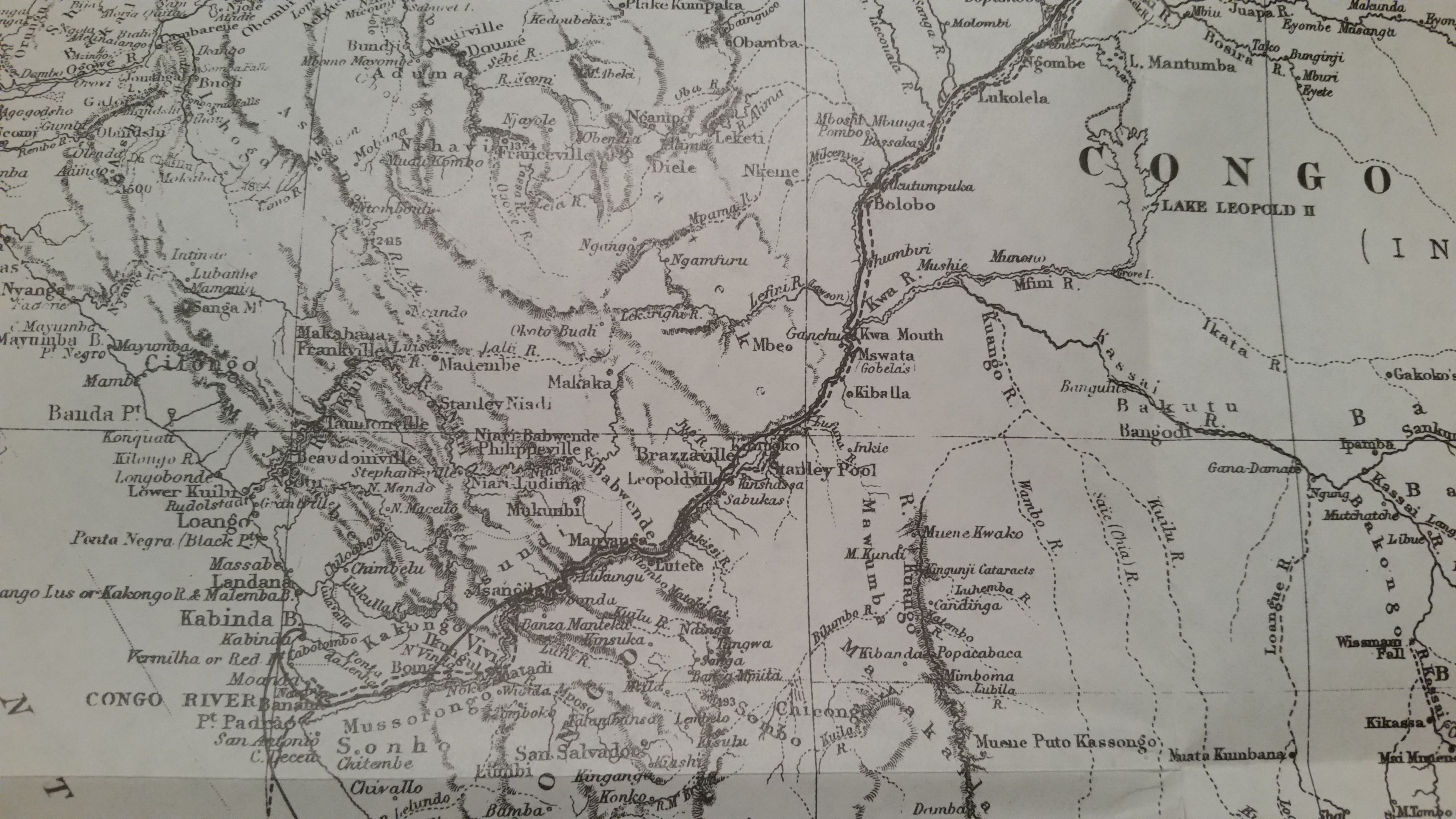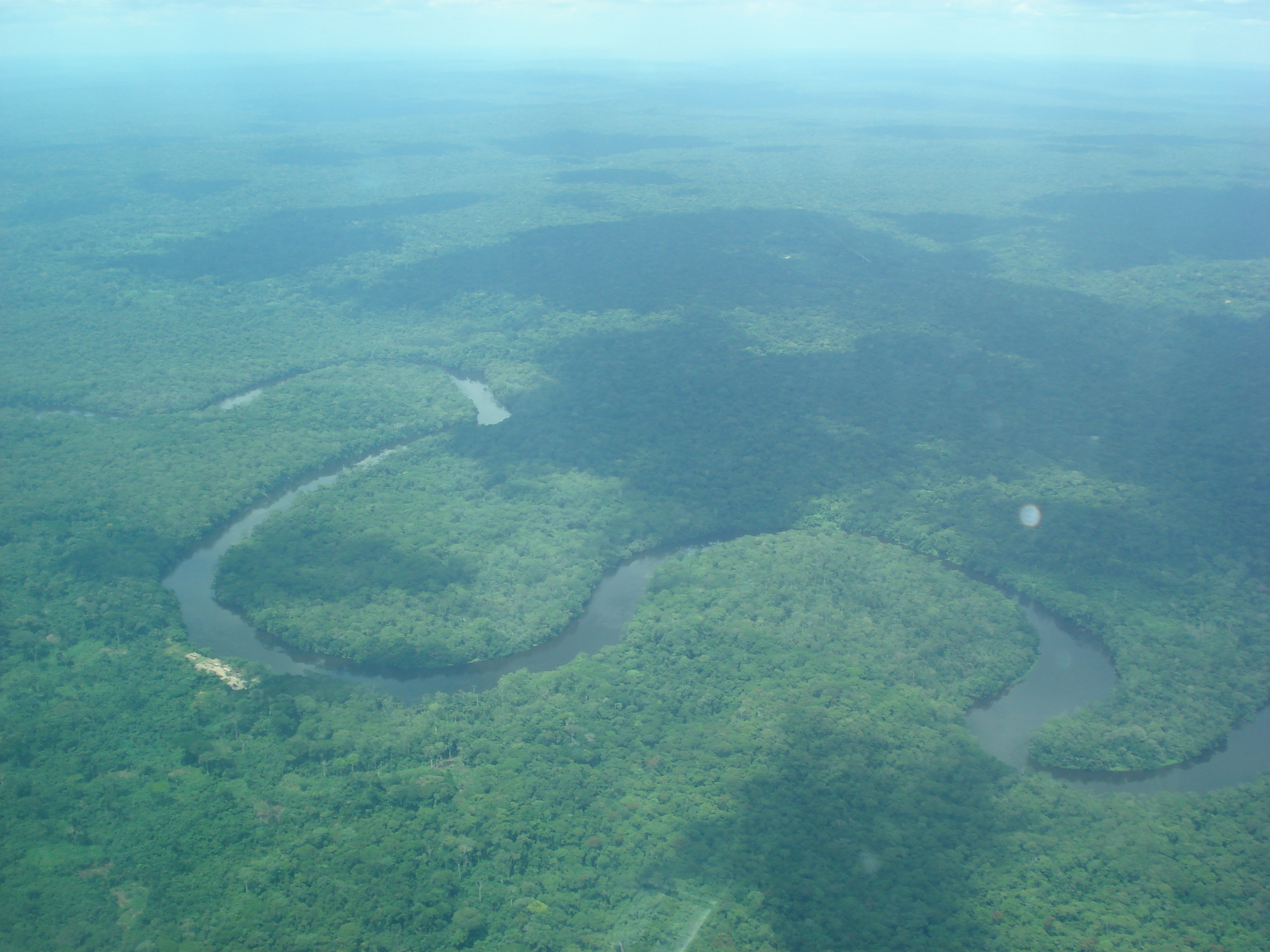|
Fimi River
The Fimi River is a river in the Democratic Republic of the Congo. It flows from Lake Mai-Ndombe to the Kasai River, which in turn empties into the Congo. One of the Fimi's tributaries is the Lukenie River The Lukenie River is a river in the central Congo basin of the Democratic Republic of the Congo (DRC). River barges from Kinshasa journey up the Congo, Kwah ( Kasai), and Fimi Rivers to the Lukenie as far as the landing at Kole, a journey of 6 ..., which is navigable by barges as far as Kole. Rivers of the Democratic Republic of the Congo Kasai River {{DRCongo-river-stub ... [...More Info...] [...Related Items...] OR: [Wikipedia] [Google] [Baidu] |
Lake Mai-Ndombe And Fimi River DRC
A lake is an area filled with water, localized in a basin, surrounded by land, and distinct from any river or other outlet that serves to feed or drain the lake. Lakes lie on land and are not part of the ocean, although, like the much larger oceans, they do form part of the Earth's water cycle. Lakes are distinct from lagoons, which are generally coastal parts of the ocean. Lakes are typically larger and deeper than ponds, which also lie on land, though there are no official or scientific definitions. Lakes can be contrasted with rivers or streams, which usually flow in a channel on land. Most lakes are fed and drained by rivers and streams. Natural lakes are generally found in mountainous areas, rift zones, and areas with ongoing glaciation. Other lakes are found in endorheic basins or along the courses of mature rivers, where a river channel has widened into a basin. Some parts of the world have many lakes formed by the chaotic drainage patterns left over from the last ic ... [...More Info...] [...Related Items...] OR: [Wikipedia] [Google] [Baidu] |
River
A river is a natural flowing watercourse, usually freshwater, flowing towards an ocean, sea, lake or another river. In some cases, a river flows into the ground and becomes dry at the end of its course without reaching another body of water. Small rivers can be referred to using names such as Stream#Creek, creek, Stream#Brook, brook, rivulet, and rill. There are no official definitions for the generic term river as applied to Geographical feature, geographic features, although in some countries or communities a stream is defined by its size. Many names for small rivers are specific to geographic location; examples are "run" in some parts of the United States, "Burn (landform), burn" in Scotland and northeast England, and "beck" in northern England. Sometimes a river is defined as being larger than a creek, but not always: the language is vague. Rivers are part of the water cycle. Water generally collects in a river from Precipitation (meteorology), precipitation through a ... [...More Info...] [...Related Items...] OR: [Wikipedia] [Google] [Baidu] |
Democratic Republic Of The Congo
The Democratic Republic of the Congo (french: République démocratique du Congo (RDC), colloquially "La RDC" ), informally Congo-Kinshasa, DR Congo, the DRC, the DROC, or the Congo, and formerly and also colloquially Zaire, is a country in Central Africa. It is bordered to the northwest by the Republic of the Congo, to the north by the Central African Republic, to the northeast by South Sudan, to the east by Uganda, Rwanda, and Burundi, and by Tanzania (across Lake Tanganyika), to the south and southeast by Zambia, to the southwest by Angola, and to the west by the South Atlantic Ocean and the Cabinda exclave of Angola. By area, it is the second-largest country in Africa and the 11th-largest in the world. With a population of around 108 million, the Democratic Republic of the Congo is the most populous officially Francophone country in the world. The national capital and largest city is Kinshasa, which is also the nation's economic center. Centered on the Cong ... [...More Info...] [...Related Items...] OR: [Wikipedia] [Google] [Baidu] |
Lake Mai-Ndombe
Lake Mai-Ndombe (french: Lac Mai-Ndombe) is a large freshwater lake in Mai-Ndombe province in western Democratic Republic of the Congo. The lake is within the Tumba-Ngiri-Maindombe area, the largest Wetland of International Importance recognized by the Ramsar Convention in the world. Location The lake drains to the south through the Fimi River into the Kwah and Congo Rivers. Known until 1972 as Lake Leopold II (''Lac Léopold II'') after Leopold II, King of the Belgians. ''Mai-Ndombe'' means "black water" in Kikongo. The lake is of irregular shape and ranges in depth from only 5 meters (mean) to 10 meters (maximum). Covering approximately 890 square miles (2,300 square km), it is known to double or triple in size during the rainy season. Its waters are oxygenated throughout their depth and the pH ranges from 4.2 to 5.5. Low, forested shores surround it with dense, humid equatorial rainforest prevailing to the north and a mosaic of forest and savanna to the south. Biodiversity S ... [...More Info...] [...Related Items...] OR: [Wikipedia] [Google] [Baidu] |
Kasai River
The Kasai River ( ; called Cassai in Angola) is a tributary (left side) of the Congo River, located in Central Africa. The river begins in central Angola and flows to the east until it reaches the border between Angola and the Democratic Republic of the Congo, where it turns north and serves as the border until it flows into the DRC. From Ilebo, between the confluences with Lulua river and Sankuru river, the Kasai river turns to a westerly direction. The lower stretch of the river from the confluence with Fimi river, is known as the Kwa(h) River, before it joins the Congo at Kwamouth northeast of Kinshasa. The Kasai basin consists mainly of equatorial rainforest areas, which provide an agricultural land in a region noted for its infertile, sandy soil. It is a tributary of Congo river and diamonds are found in it. Around 60% of diamonds in Belgium go from Kasai river for cutting and shaping. Exploration Henry Morton Stanley reached the confluence on 9 March 1877, calling the rive ... [...More Info...] [...Related Items...] OR: [Wikipedia] [Google] [Baidu] |
Congo River
The Congo River ( kg, Nzâdi Kôngo, french: Fleuve Congo, pt, Rio Congo), formerly also known as the Zaire River, is the second longest river in Africa, shorter only than the Nile, as well as the second largest river in the world by discharge volume, following only the Amazon. It is also the world's deepest recorded river, with measured depths around . The Congo- Lualaba- Chambeshi River system has an overall length of , which makes it the world's ninth- longest river. The Chambeshi is a tributary of the Lualaba River, and ''Lualaba'' is the name of the Congo River upstream of Boyoma Falls, extending for . Measured along with the Lualaba, the main tributary, the Congo River has a total length of . It is the only major river to cross the Equator twice. The Congo Basin has a total area of about , or 13% of the entire African landmass. Name The name ''Congo/Kongo'' originates from the Kingdom of Kongo once located on the southern bank of the river. The kingdom in turn was name ... [...More Info...] [...Related Items...] OR: [Wikipedia] [Google] [Baidu] |
Lukenie River
The Lukenie River is a river in the central Congo basin of the Democratic Republic of the Congo (DRC). River barges from Kinshasa journey up the Congo, Kwah ( Kasai), and Fimi Rivers to the Lukenie as far as the landing at Kole, a journey of 6 to 12 weeks. This is not done during the low water season (June–August), however, for fear of stranding for long periods. The Lukenie is not navigable by barges above Kole. During the early Belgian colonial era, the river was sometimes used to transport rubber from posts such as Kole and Lodja down to Lake Leopold II. However, most supplies were brought overland from Bene Dibele, to the south on the right bank of the Sankuru River just below the point where it is joined by the Lubefu River, a more reliable route. Some of the main logging concession areas of Sodefor are on both sides of the Lukenie River, centered on Oshwe. In September 2010 hundreds of people in Oshwe, a community in Mai-Ndombe Province Mai-Ndombe is one of the 21 ... [...More Info...] [...Related Items...] OR: [Wikipedia] [Google] [Baidu] |
Kole, Democratic Republic Of The Congo
Kole is a remote town in central Democratic Republic of the Congo on the Lukenie River. It is the administrative center of the Kole Territory, which in turn is part of Sankuru Province. Kole is sometimes designated "Kole Sur Lukenie" to distinguish it from other "Koles" in the DRC. Demography and ethnography According to local Ministry of Health officials, the population of the town in 2007 was about 10,060 persons (the total for the territory is said to be 71,040). The settlement consists of a few score stuccoed brick buildings, many of them left over from the now defunct cotton plantations of the area. The majority of residents, however, live in very simple wattle and daub houses of their own construction. The people of Kole, and for tens of kilometers around the town, belong to a subtribe of the Nkutu (or Okutshu) known as the Elembe (also called Ohindu or Ohendo). They speak a dialect ( Kihindo) which is mutually intelligible with other Nkutu tongues, as well as with that o ... [...More Info...] [...Related Items...] OR: [Wikipedia] [Google] [Baidu] |
Rivers Of The Democratic Republic Of The Congo
A river is a natural flowing watercourse, usually freshwater, flowing towards an ocean, sea, lake or another river. In some cases, a river flows into the ground and becomes dry at the end of its course without reaching another body of water. Small rivers can be referred to using names such as Stream#Creek, creek, Stream#Brook, brook, rivulet, and rill. There are no official definitions for the generic term river as applied to Geographical feature, geographic features, although in some countries or communities a stream is defined by its size. Many names for small rivers are specific to geographic location; examples are "run" in some parts of the United States, "Burn (landform), burn" in Scotland and northeast England, and "beck" in northern England. Sometimes a river is defined as being larger than a creek, but not always: the language is vague. Rivers are part of the water cycle. Water generally collects in a river from Precipitation (meteorology), precipitation through a ... [...More Info...] [...Related Items...] OR: [Wikipedia] [Google] [Baidu] |





